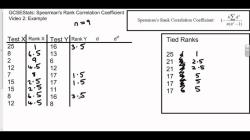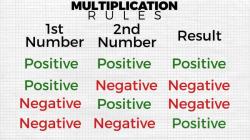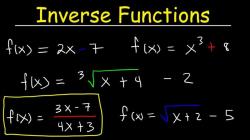What are the steps to solve an inequality?
Solving an inequality involves a series of steps to find the values that make the inequality statement true. Here is a comprehensive guide on how to solve an inequality:
Step 1: Understand the Inequality
- Carefully read and understand the given inequality statement. Identify the variable, the inequality symbol (e.g., "<," ">", "<=," or ">="), and the constants or expressions on both sides of the inequality.
Step 2: Isolate the Variable
- Your goal is to isolate the variable on one side of the inequality. This may involve adding, subtracting, multiplying, or dividing by constants or expressions on both sides. When performing these operations, ensure that you maintain the direction of the inequality.
Step 3: Simplify
- Simplify the expression on both sides of the inequality by combining like terms. This makes it easier to work with.
Step 4: Graph the Inequality (Optional)
- If you want a visual representation of the solution set, you can graph the inequality on a number line or coordinate plane. Shade the region that represents the values that satisfy the inequality.
Step 5: Determine the Direction of the Inequality
- Based on the inequality symbol, determine the direction in which the solution set lies. If it's "<," the solution is to the left; if it's ">", the solution is to the right; if it's "<=," the solution includes the boundary; if it's ">=" the solution includes the boundary.
Step 6: Express the Solution Set
- Write down the solution set in the form of an interval notation or set notation, depending on the context. If it's an open interval, use parentheses (e.g., ); if it's a closed interval, use square brackets (e.g., ); if it's a half-open interval, use a combination of parentheses and brackets (e.g., ).
Step 7: Check the Solution
- Test the values in the solution set by substituting them into the original inequality. Ensure that they make the inequality true.
Step 8: Express the Solution in Plain Language
- If necessary, express the solution in plain language to explain what it means in the context of the problem.
Step 9: Special Considerations
- Be aware of special cases, such as absolute value inequalities or inequalities with variables in the denominator. These may require additional steps or different techniques.
Step 10: Finalize the Solution
- Review your work to make sure you have accurately solved the inequality. Double-check the direction of the inequality and the form of the solution set.
Here's an example to illustrate these steps:
Example: Solve the inequality .
Step 1: Understand the Inequality.
- Variable:
- Inequality: "<"
- Constants/Expressions: and
Step 2: Isolate the Variable.
- Add 3 to both sides:
- Divide by 2 (a positive number):
Step 3: Simplify.
- The expression is already simplified.
Step 4: Graph the Inequality (Optional).
- Represent the solution set as on a number line.
Step 5: Determine the Direction of the Inequality.
- Since it's "<," the solution is to the left.
Step 6: Express the Solution Set.
- The solution set is .
Step 7: Check the Solution.
- Substitute values, such as , into the inequality to ensure it's true: , which is true.
Step 8: Express the Solution in Plain Language.
- The values of that make the inequality true are all real numbers less than 6.
Step 9: Special Considerations.
- None in this case.
Step 10: Finalize the Solution.
- Review your work and confirm that you've solved the inequality correctly.
These steps can be used to solve various types of inequalities, and they provide a systematic approach to finding the solution set.
Step-by-step instructions for solving inequalities in mathematics:
- Identify the inequality symbol. The inequality symbol (<, >, ≤, or ≥) tells you how the two expressions on either side of the inequality are related.
- Isolate the variable. To solve the inequality, you need to isolate the variable on one side of the inequality sign. To do this, you can use the same mathematical operations that you use to solve equations.
- Solve the inequality. Once you have isolated the variable, you can solve the inequality by performing the necessary mathematical operations.
- Check your solution. Once you have solved the inequality, it is important to check your solution to make sure that it is correct. To do this, substitute your solution back into the original inequality and make sure that it is true.
Identifying and classifying different types of inequalities:
There are two main types of inequalities: linear and nonlinear.
- Linear inequalities: Linear inequalities are inequalities in which the variable is raised to the power of 1 or 0.
- Nonlinear inequalities: Nonlinear inequalities are inequalities in which the variable is raised to a power greater than 1 or in which the variable is involved in other mathematical operations, such as multiplication or division.
Techniques for manipulating and simplifying inequalities:
There are a number of techniques that can be used to manipulate and simplify inequalities. Some common techniques include:
- Adding or subtracting the same quantity to both sides of the inequality: This will not change the direction of the inequality.
- Multiplying or dividing both sides of the inequality by the same positive quantity: This will not change the direction of the inequality.
- Multiplying or dividing both sides of the inequality by the same negative quantity: This will reverse the direction of the inequality.
- Factoring polynomials: This can be used to simplify linear and quadratic inequalities.
- Completing the square: This can be used to solve quadratic inequalities.
- Using the quadratic formula: This can also be used to solve quadratic inequalities.
The significance of graphing inequalities to visualize solutions:
Graphing inequalities is a useful way to visualize their solutions. To graph an inequality, you can follow these steps:
- Graph the corresponding equation as a solid line or a dashed line, depending on the inequality symbol.
- Shade the region above or below the line, depending on the inequality symbol.
The shaded region represents the solutions to the inequality.
Real-world applications of solving inequalities in problem-solving:
Solving inequalities has a wide range of real-world applications. For example, inequalities can be used to:
- Model and solve real-world problems, such as finding the minimum or maximum value of a function.
- Analyze the effects of a change in a variable on another variable.
- Make predictions about future events.
- Make decisions based on risk and reward.
Here are some specific examples of real-world applications of solving inequalities:
- A business can use inequalities to determine the minimum price that it can charge for a product in order to make a profit.
- An investor can use inequalities to assess the risk of a particular investment.
- A scientist can use inequalities to model the spread of a disease or the growth of a population.
- An engineer can use inequalities to design a bridge that can support a certain amount of weight or to design a circuit that operates within a certain range of voltages.
Overall, solving inequalities is an important skill that has a wide range of real-world applications.













